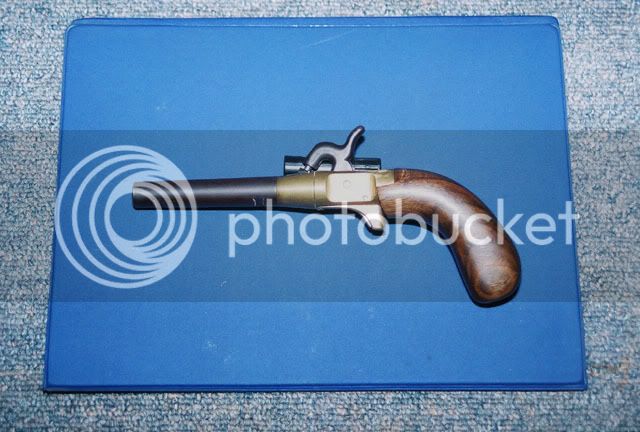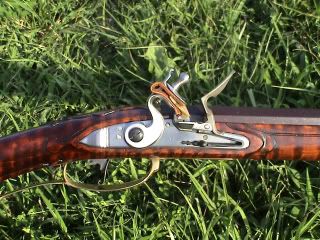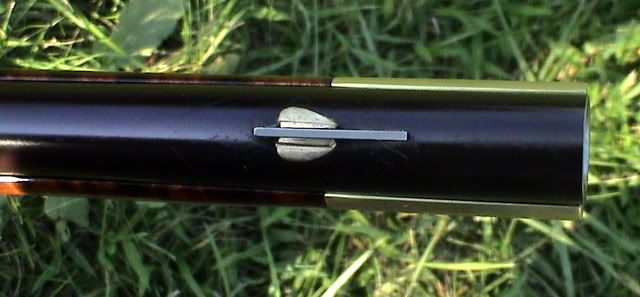I have not tried the Dixel Scratch wheel sold by Brownell's yet. I have hear good things about it though. Most report fine grain texture and a shinier finish than I get with steeel wool, denim, or canvas.
I guess I should also add that the type of steel used has a say in color too. Different steels take the solution different.
I have played around a little with this and have gotten different colors. By this I mean from light milk chocolate to dark choloclate. I also got the dreaded copper color once too. Getting a specific color is not an exact science, it is more a feel.
Texture comes into play as well and does affect color.
You get a rougher texture by using the humidity box with the light bulb on. Essentially the added temperature and humidity makes the solution act more aggressive. This also tends to provide a darker color quicker.
Use the humidity box with the light bulb off gives more agressive rusting than in my basement alone but not as aggressive as with the light on. Doing that I got a finer texture and a medium brown color.
Just setting the barrel in my basement gives the finest texture and lightest color.
The more cycles you do the more the color evens out. With enough applications you can get darker colors with less texture.
The "cycle" you use has an effect on texture as well. The 12 hour cycle gives a rougher or more matt texture as it has had more time to work. The 3 hours cycle provides a finer texture. The 12 hour cycle gets complete coverage in fewer applications.
You can also darken things by pouring hot water over the metal between applications or after the last application. If you want to go for a rust blue you actually boil the barrel in denatured water before carding at each cycle. Pouring boiling water does not affect the color near as much as boiling for 10-20 minutes does. Either way the color change is perminent.
When the rust is very fragile, first one or two cycles in the 3 hour cycle, I may card with cloth as it is less aggressive than steel wool. Steel wool will work it just takes more application and you want to be real light with it at first. It seams to allow the solution to etch in faster but does provide more of a textured finish than using steel wool the entire time.
I do not have a good picture of the very dark Chocolate almost black color I got by useing the hunidty box and stel wool through the entire process on a 12 hour cycle for 7 days and finifhing with 5-10 galons of very hot water. That gun was for my brother who wanted a very dark barrel. Basically I sat the barrel in the bottom of the bathtub once complete and poured hot water over it and let it set in there until I could pull it out. Nearly rust blued that sucker.
Here is a picture of one where I let is rust just in my basement and only used steel wool near the end. Hope you can see the color okay. It is a ligther milk chocolate color. Wshed in warm water only.
This is a pistol I redid for my brother using a 3 hour cycle inside my humidity box with light on and steel wool after the first two cardings. Washed in hot water. Acheived a finer texture than I did on his rifle. Color not quite as dark.
This is a rifle I did for me using my humidity box with light on for the first 1/2 to 3/4 of the cycles. After that I left the light off and later kept the lid off just to gradually slow things a bit. Canvas was used on the first cycle and steel wool following that. Washed in hot water. Rougher testure than pistol but still finer than the rifle for my brother and color somewhere between.
Essentially I can go light, dark, or somewhere in between. That is about the extent of my control. If the process is not going fast enough to my liking I add heat or humidity. If I want to slow it down I take one or both of those away. No two barrels have undergone quite the same process. I kind of do it by feel now.
This barrel need a repair. I took a spot back to bare metal and rebrown that area. I was not able to duplicate the exact original process. So by "feel" tried to match to color and texture based on how things were or seemed to be progressing. I think I did okay.
To be honest the above directions where cobled together following conversations with Jim Chambers, Homer Dangler, and Tip Curtis. Mr. Dangler was the one that told me you could achieve various "colors" and textures by varying the process and just play around with it until I sort of developed a feel for what I wanted to achieve. He told me that no two pieces every come out the exact same color but by feel you can get close.










